Facial palsy grade
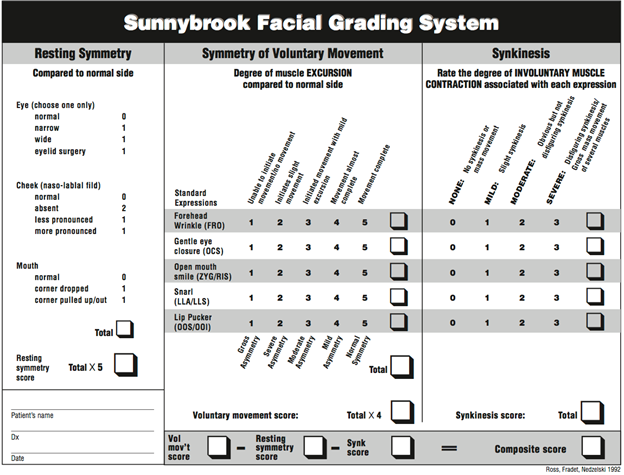
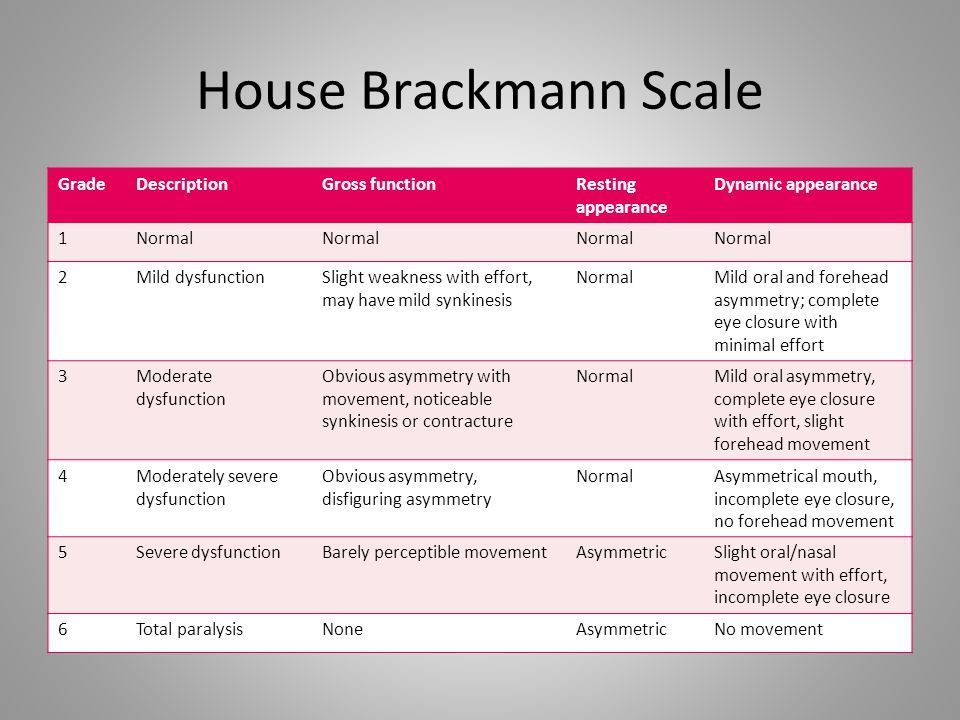
Facial nerve grading system.


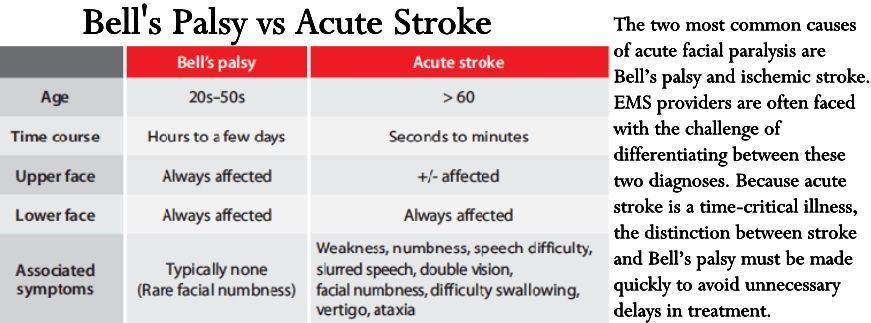
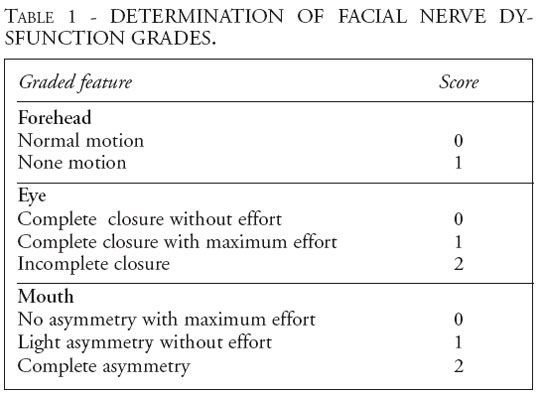


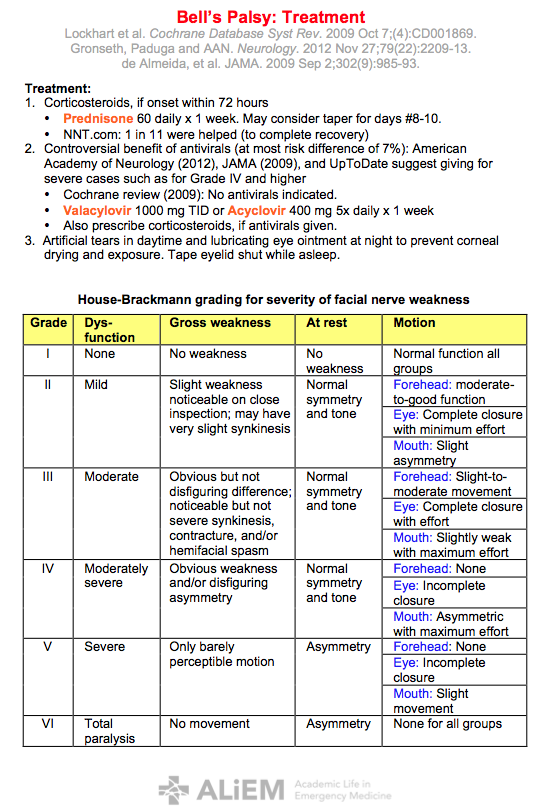
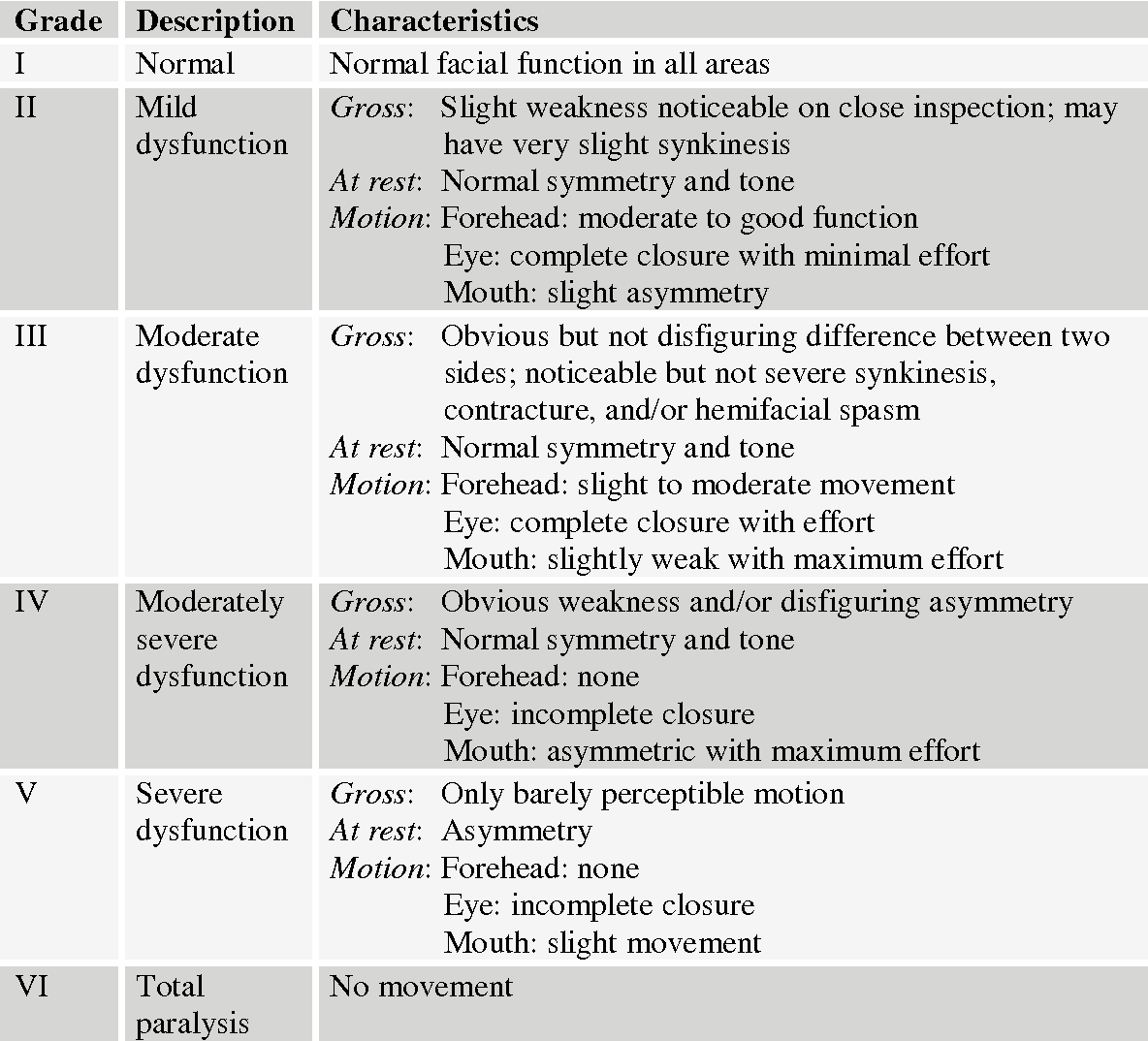
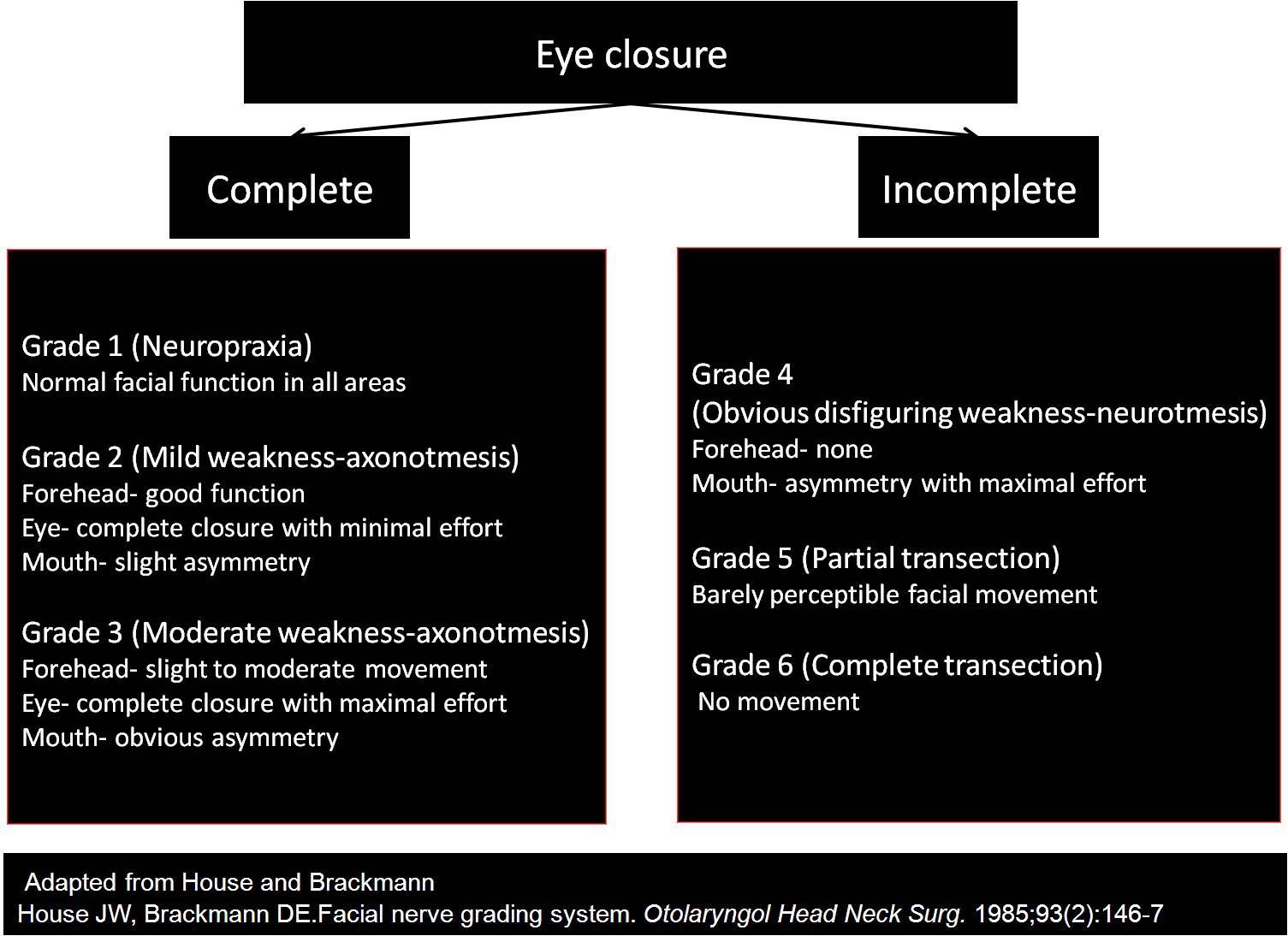

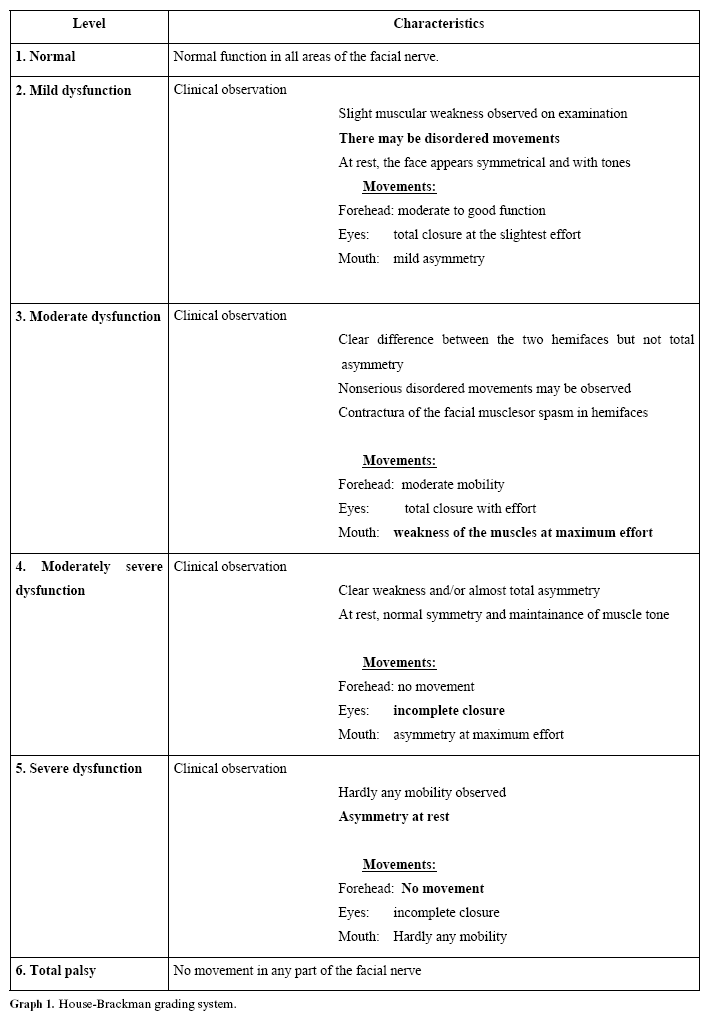
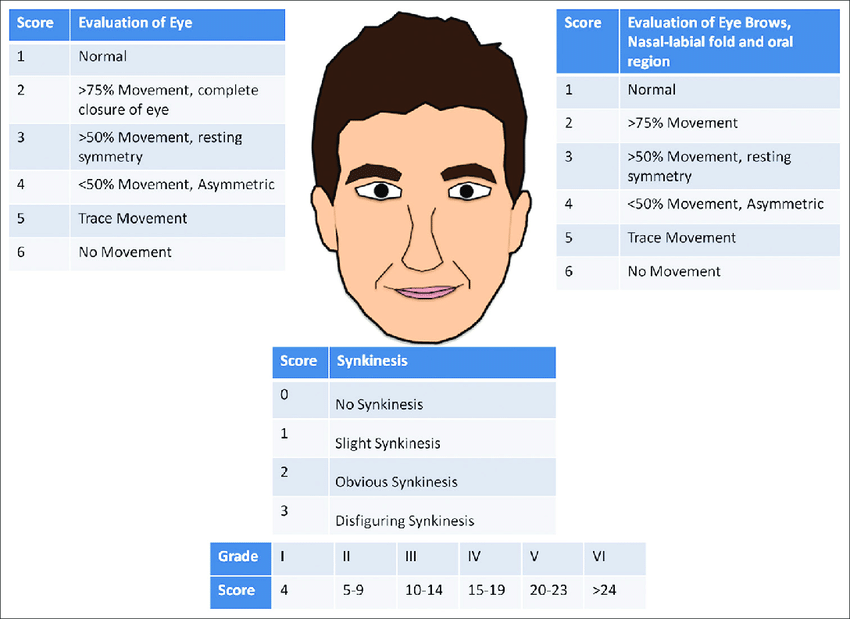
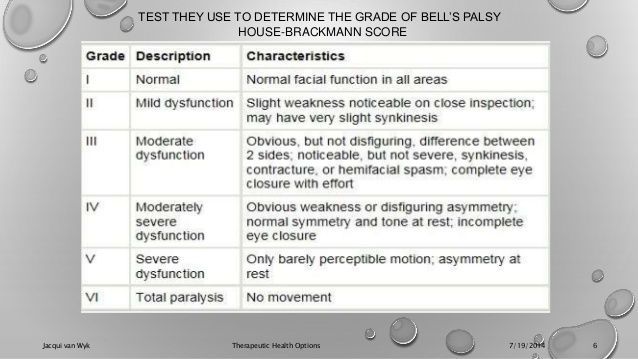
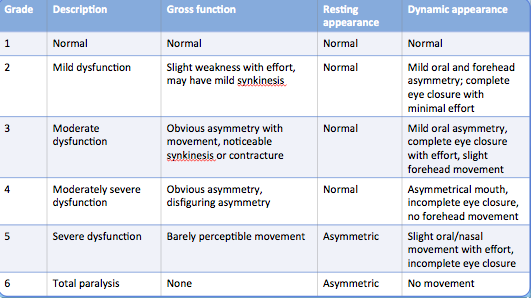
8 Dec The House-Brackmann Facial Nerve Grading System is widely used to characterize the degree of facial paralysis. In this scale, grade I is assigned to normal function, and grade VI represents complete paralysis. House-Brackmann Classification of Facial Function [1, 2] (Open Table in.
House Brackman Scale - ANZ Journal of Surgery
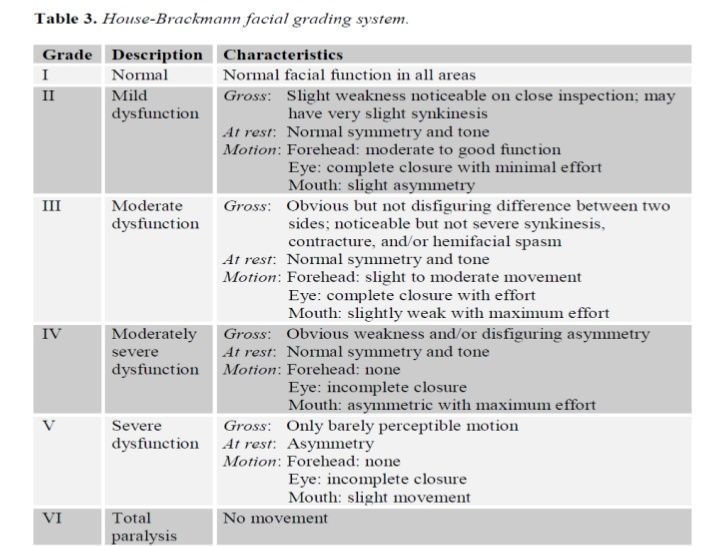
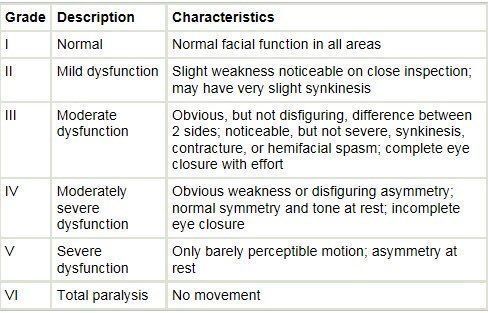
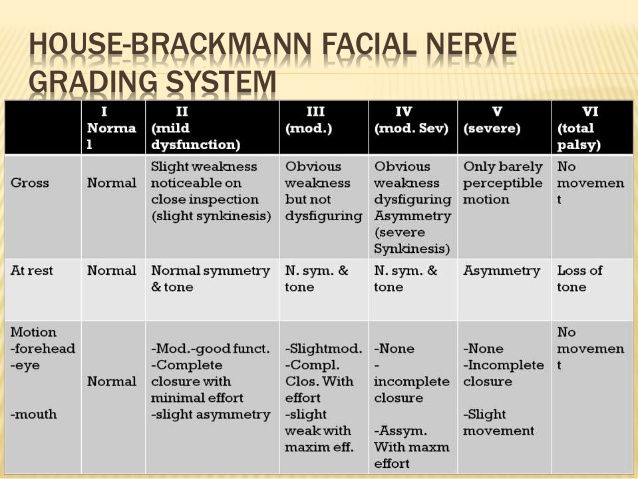
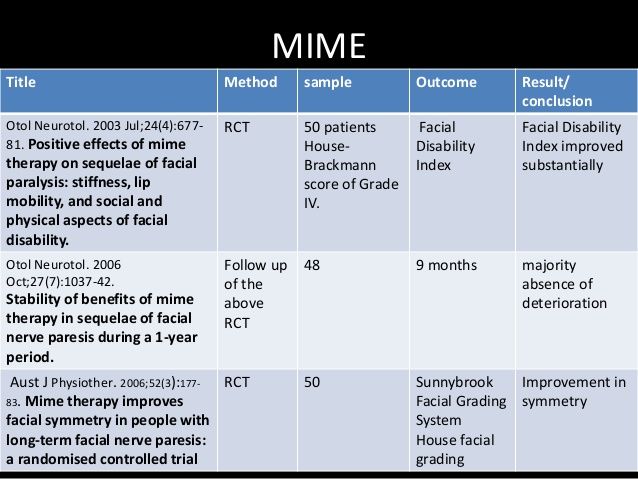
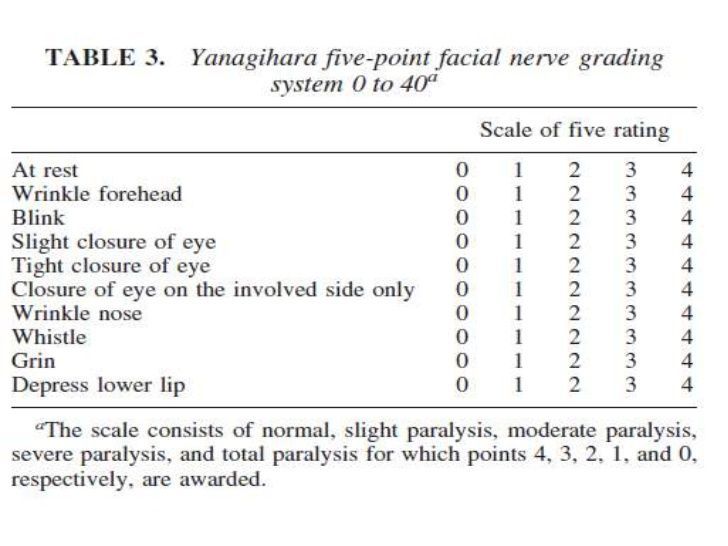

Hayley Age: 34. I have natural measurements of D-- accompanied by a wonderful smile, great personality, and awesome attitude
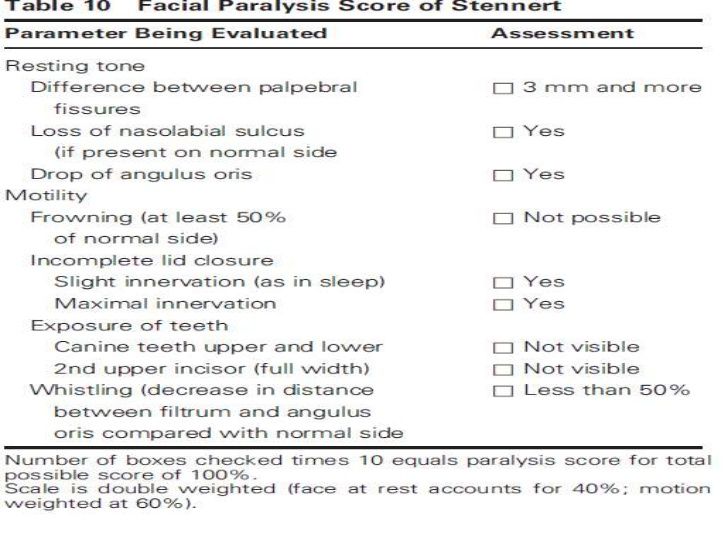
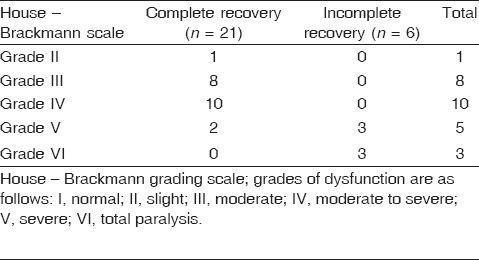
The House-Brackmann scale is used to quantify and describe facial nerve dysfunction (facial paralysis).
Description:Symptoms of facial nerve injury may vary due to age, facial anatomy and the extent of nerve-damage. In addition we include a description of segmental weakness zone-specific information , changes in the facial soft tissues and synkinesis. Standarised assessment of facial function House-Brackmann HB is one of several analysis tools developed to quantify facial function and provide reproducible information. It is a widely accepted system, simple, sensitive, accurate and reliable - grading facial function in six steps from normal HB I to total paralysis HB VI. To objectively describe facial function, clinicians use a number of standardised scales - the most common being the House-Brackmann facial nerve grading system. A light degree of facial nerve weakness may only be visible as subtle asymmetries following repeated and exhausting muscle function, whereas severe dysfunction can be easily recognised even at rest. At the Sorensen Clinic we routinely use the House-Brackmann scale to evaluate new and existing patients.















































User Comments 2
Post a comment
Comment: